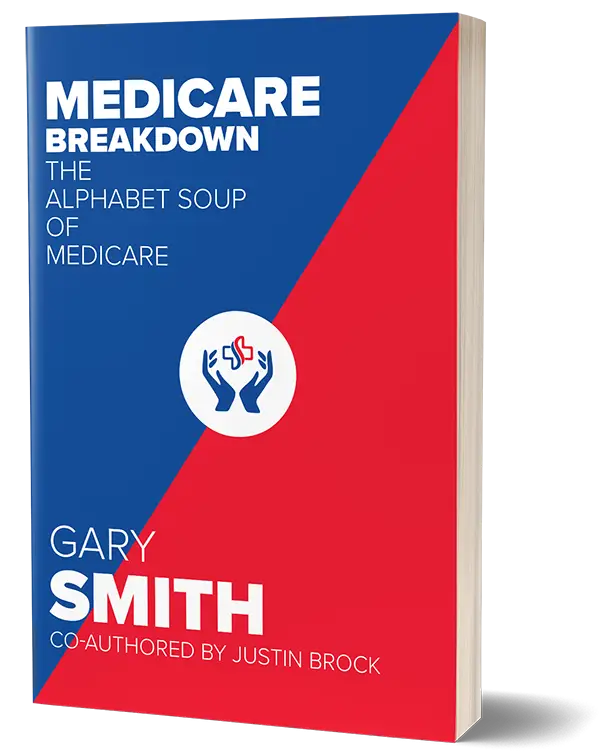Medicare Supplement
A Medicare Supplement Policy is a private Health plan that is designed to pick up the coverage gaps in your Original Medicare. Under your Original Medicare you will receive a Red, White and Blue Card with Part A and Part B. You must have a date next to Part A and Part B for both parts to be active.
Note: A Medicare Supplement plan and a Medigap plan are the same plan. Both words mean the same thing.
Get A Free Quote
We put the CARE in Medicare!
Original Medicare coverage gaps are as follows:
Part A
Has a deductible for all In-Patient Hospital Stays. The deductible changes every calendar year and is around $1600 per benefit period. A benefit period basically means per admission.
Part B
Has a calendar year deductible plus 20% of the bill. The Part B annual deductible changes every year and is approximately: $250 per year plus 20% of the Part B bills.
Medicare Supplements
Also called Medigap plans are plans that you can purchase to pick up the gaps in Medicare Part A and Part B.
What Is a Medicare Supplement?
Understanding the Basics
As you approach the age of 65, you might start hearing a lot of terms like Medicare, Medicare Advantage, and Medicare Supplement. For many, the ins and outs of Medicare can feel overwhelming, especially when you're trying to figure out what each type of coverage offers and how it affects your health care costs.
A Medicare Supplement plan, often referred to as Medigap, is one of the most popular ways for Medicare recipients to fill in the gaps left by Original Medicare (Parts A and B). But what exactly is a Medicare Supplement? How does it work? And, perhaps most importantly, is it right for you?
Let’s dive in and break it all down.
What Is Medicare Supplement (Medigap)?
A Medicare Supplement (Medigap) plan is a type of health insurance designed to cover some of the out-of-pocket costs that Original Medicare doesn't. These gaps include copayments, coinsurance, and deductibles. Essentially, Medigap plans work alongside your Original Medicare coverage to reduce your overall healthcare expenses and provide more financial predictability.
It’s important to note that a Medicare Supplement plan does not replace Original Medicare. Instead, it fills in the gaps by covering costs that Medicare doesn't. It’s a great way to enhance your Medicare coverage and avoid unexpected medical bills.

How Does Medicare Supplement Work?
To understand how a Medicare Supplement works, let’s first review the basics of Original Medicare:
- Medicare Part A (think inpatient coverage): Covers hospital stays, skilled nursing care, hospice care, and some home health care.
- Medicare Part B (think outpatient coverage): Covers doctor visits, outpatient care, preventive services, and some types of medical equipment.
While Medicare Part A and Part B offer a solid foundation of health insurance coverage, they don’t cover everything. Some of the costs left behind can add up quickly. That’s where Medigap comes in.
A Medicare Supplement plan can cover the following costs:
- Part A hospital coinsurance and hospital costs
- Part B coinsurance (generally 20% of outpatient services)
- Part A deductibles
- Part B deductible (only some plans)
- Blood transfusions (the first 3 pints)
- Skilled nursing facility care (coinsurance)
- Foreign travel emergency care (some plans)
Each Medigap plan has its own specific set of benefits, but they are standardized across the country. The lettered plans (A, B, C, D, F, G, K, L, M, and N) have different levels of coverage, but the core benefits are essentially the same from one insurer to another.
Types of Medicare Supplement Plans
Medicare Supplement plans are identified by letters (A through N), and each plan provides a different combination of benefits. While they are standardized across the U.S., the cost of each plan can vary depending on the insurance company and location.
Here’s a quick overview of the most common Medigap plans:
| Medigap Plan | Coverage Provided | Most Common Benefits |
|---|---|---|
| Plan A | Basic coverage | Part A coinsurance, Part B coinsurance, Part A deductible, 3 pints of blood |
| Plan B | More coverage | Includes all of Plan A + Part B deductible |
| Plan C | Extensive coverage | Includes all of Plan B + skilled nursing care coinsurance, Part B excess charges |
| Plan D | Good coverage | Includes all of Plan B + skilled nursing care coinsurance |
| Plan F | Most comprehensive | Includes all benefits, including Part B deductible |
| Plan G | Similar to Plan F and Most popular plan | Includes all benefits, except Part B deductible |
| Plan N | More affordable | Includes all of Plan G, but with copayments for doctor visits and emergency room visits |
Pro Tip: Some Medigap plans are no longer available to new Medicare beneficiaries. For example, Plan F and Plan C are only available to those who were eligible for Medicare before January 1, 2020. However, Plan G remains the most comprehensive plan available for new enrollees.
How Much Does Medicare Supplement Cost?

The cost of Medicare Supplement plans depends on a few factors:
- Plan Type: The specific lettered plan you choose will determine the coverage and cost.
- Insurance Provider: Different insurance companies offer Medigap plans, and the premiums can vary.
- Location: Medigap premiums also vary by state and even county, as different areas have different healthcare costs.
- Age: Some insurers adjust premiums based on your age when you first buy Medigap. Some companies may also increase premiums as you age.
Medicare Supplement premiums are typically paid monthly, and they are separate from your Medicare Part B premium. So, in addition to paying your Part B premium (which is around $164.90 per month in 2023), you’ll also need to budget for your Medigap premium.
How to Enroll in Medicare Supplement
The best time to enroll in a Medicare Supplement plan is during your Medigap Open Enrollment Period. This is the 6-month period that starts the month you turn 65 and are enrolled in Medicare Part B. During this time, you have the right to purchase any Medigap plan regardless of your health status, and you can’t be charged higher premiums due to pre-existing conditions.
If you miss this enrollment period, you can still apply for a Medigap plan, but the insurer may deny you coverage or charge you a higher premium if you have health issues.

To enroll, follow these steps:
- Sign up for Medicare Part A and Part B (if you haven’t already).
- Contact insurance companies or a Medicare agent to compare Medigap plans available in your area.
- Choose a plan based on your budget and healthcare needs.
- Enroll directly through the insurance company or through a licensed agent. You can also visit the official Medicare website for guidance.
Pros and Cons of Medicare Supplement Plans
Pros:
- Comprehensive coverage: Medigap plans cover many out-of-pocket costs that Medicare doesn’t, giving you peace of mind.
- No network restrictions: Medigap plans allow you to see any doctor or specialist who accepts Medicare, anywhere in the U.S.
- Guaranteed renewability: Once you have a Medigap plan, your coverage is guaranteed to renew each year, as long as you continue paying your premiums.
Cons:
- Premiums are not locked in: premiums are age based and will go up annually
- No prescription drug coverage: Medigap plans do not include prescription drug coverage, so you may need to enroll in a separate Part D plan.
- Higher premiums: While Medigap helps cover your out-of-pocket costs, it can be more expensive than Medicare Advantage plans.
- No coverage for certain things: Medigap doesn’t cover dental, vision, or hearing services, which may require additional plans.
Who Should Consider a Medicare Supplement?
A Medicare Supplement plan is a good option for people who:
- Want predictable healthcare costs with little to no out-of-pocket spending.
- Prefer the flexibility to see any doctor or specialist who accepts Medicare.
- Are willing to pay a higher monthly premium in exchange for comprehensive coverage.
Is a Medicare Supplement Right for You?
A Medicare Supplement plan can offer substantial peace of mind and help you manage the costs of healthcare during retirement. If you value comprehensive coverage, the freedom to choose your doctors, and predictability in healthcare spending, Medigap may be the right option for you.
Be sure to weigh the costs and benefits carefully, and remember to enroll in a Medigap plan during your Open Enrollment Period to get the best coverage at the best price. If you have questions, or if you’re not sure where to start, contact a local Medicare agent for expert guidance—they can help you navigate the choices and find a plan that meets your needs and budget.



